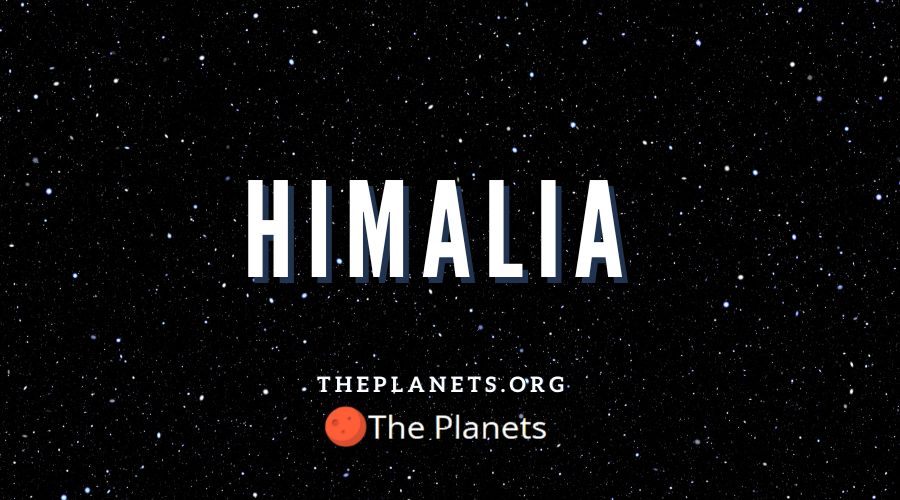
Himalia became famous nearly twenty years ago. On December 19, 2000, the Cassini telescope and spacecraft travelled close enough to the planet Jupiter to capture a clear image of this moon. Although only the fifth largest in size, Himalia shines more brightly in space than any of Jupiter’s other outer satellites. It possesses an irregular non-spherical shape.
The Himalia Group
Today, astronomers view Himalia and three other similar outer moons as members of “the Himalia Group”. Himalia forms the largest moon within this set. In addition to Himalia, the moons Leda, Elara, and Lysithea belong to the Himalia Group.
All of the members of the Himalia Group travel in a direct, prograde orbit around Jupiter. All of them also display an irregular, non-spherical shape. Most scientists believe the moons within the Himalia Group share a common origin as an asteroid. They surmise this chunk of rock drifting in space became trapped within Jupiter’s gravitational field. It broke apart at some point. Yet the pieces still orbit around the large planet as outer moons.
The Discovery of Himalia
Himalia lies too far away from Earth to spot in the night sky without the assistance of a telescope. An astronomer named Charles Dillon Perrine discovered Himalia on December 3, 1904. At the time, he worked at Lick Observatory, an observatory located a short distance east of San Jose, California.
In 1905, Charles Dillon Perrine also discovered another moon in the Himalia Group, Leda. An award winning astronomer, he later moved to Argentina, where he became the Director of the Argentine National Observatory. Scientists have named the Perrine Crater on Earth’s moon in his honor.
Naming Himalia
For many years, Himalia and Leda carried the temporary names “Jupiter VI” and “Jupiter VII”. During the early 1900s, scientists considered them the sixth and seventh moons of Jupiter. Only in 1975 did these outer moons receive their current names.
The International Astronomical Union (the “IAU”) assigned names ending in the letter “a” to these moons to indicate they maintain direct prograde orbits. Today, when the name of a moon ends in an “a”, it travels in the same direction as the planetary rotation. Astronomers from around the world belong to the IAU.
The Meaning of Himalia’s Name
The name “Himalia” refers to an ancient Greek word meaning “abundant”. An early Greek legend described a beautiful Nymph residing on the Island of Rhodes in the Mediterranean Sea. The powerful god Zeus fell in love with her. They eventually had three sons together.
Despite the moon Himalia’s romantic name, this satellite of Jupiter likely does not produce any abundant harvests. Instead, it resembles an irregularly shaped chunk of rock. Himalia remains roughly 7.1 million miles away from the planet Jupiter. This moon completes an orbit every 251 Earth days.
Interesting Facts About Himalia
Himalia exceeds other irregularly shaped moons of Jupiter in size. It possesses a diameter of approximately 170 kilometers (about 105 miles). While Himalia ranks as the fifth largest Jovian moon, it has only 1/20th the size of Jupiter’s fourth largest moon, Europa.
Himalia appears grey in color. Unlike Earth, it does not possess a 24-hour long day. Instead, a day on Himalia lasts only 7.75 hours. Some people have suggested water might exist within the interior of Himalia, but scientists have not confirmed that speculation.
A Missing Member of The Himalia Group
A fascinating recent mystery surrounds Himalia and the Himalia Group. In 2000, scientists detected a very small satellite near the Himalia Group named S2000 Jll. It measured just 2.4 miles in diameter. Initially, some astronomers believed this tiny object formed part of the Himalia Group of outer moons.
However, scientists found themselves unable to track this small satellite during recent years. Its disappearance has prompted a lot of theories. Some people wonder whether S2000 Jll collided with Himalia recently and broke into small fragments?